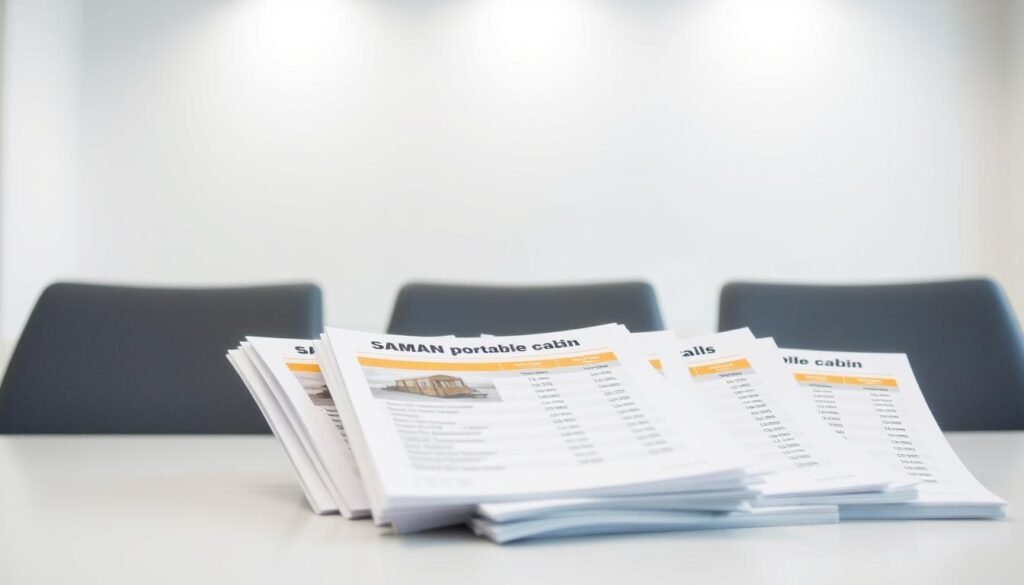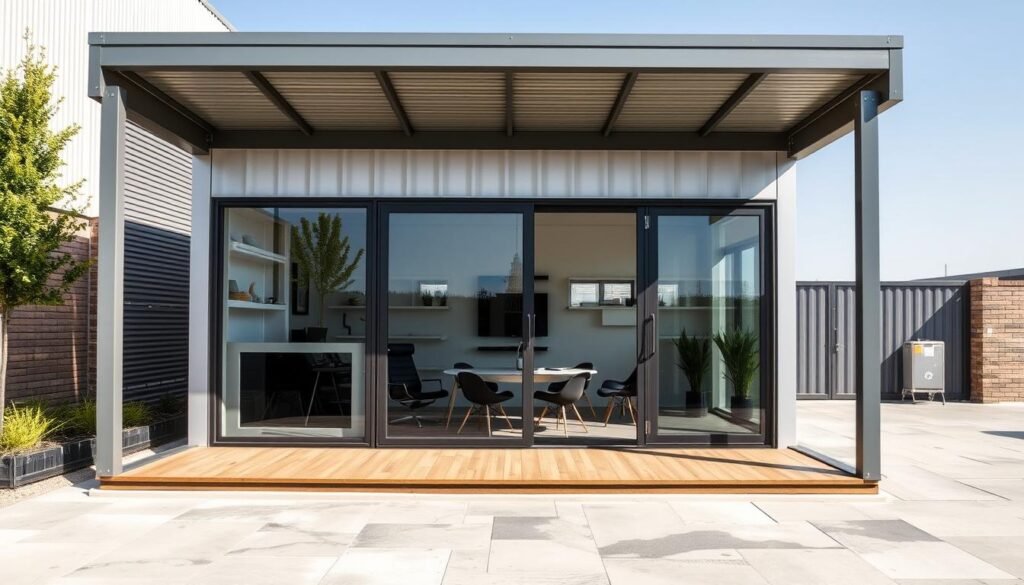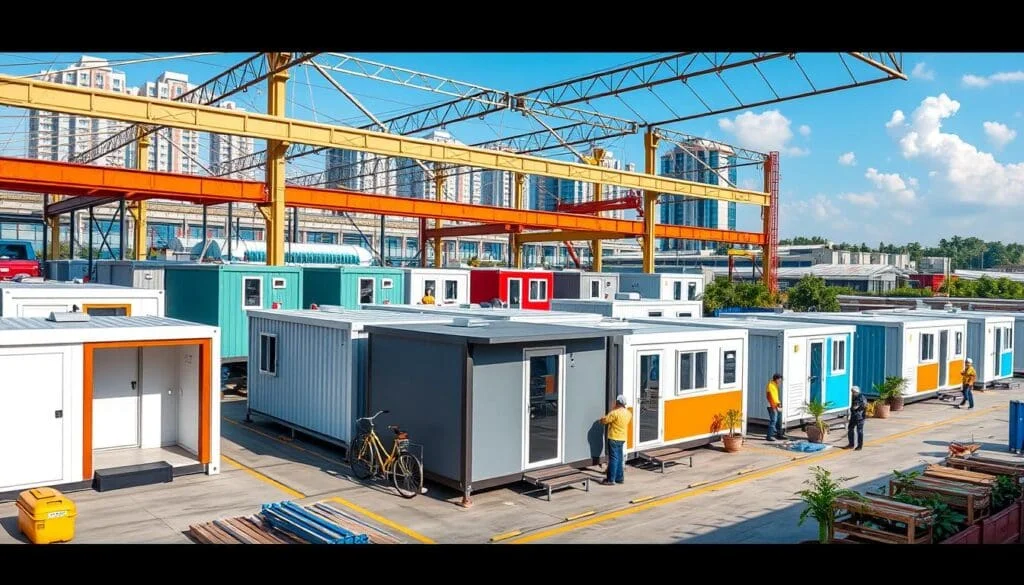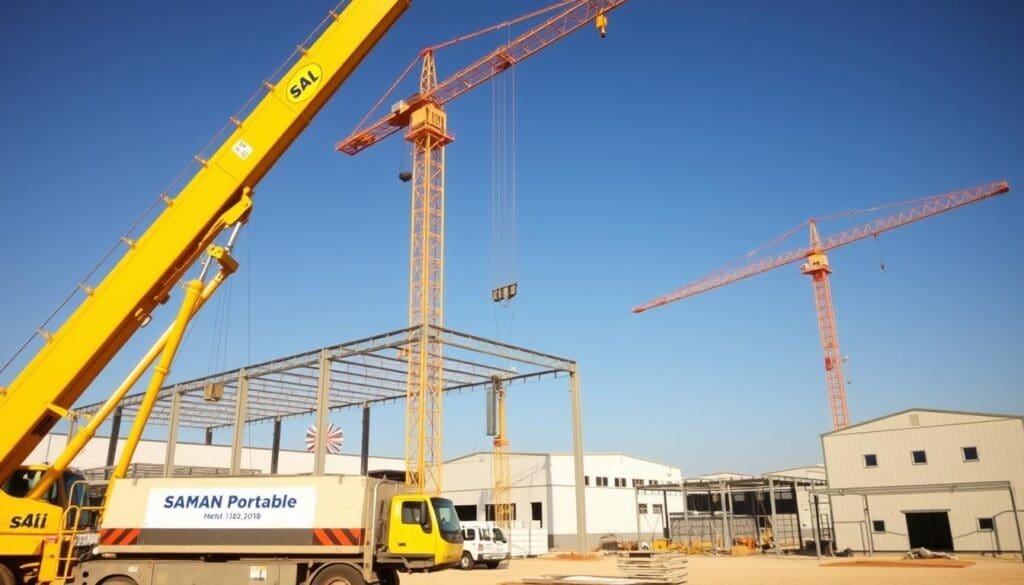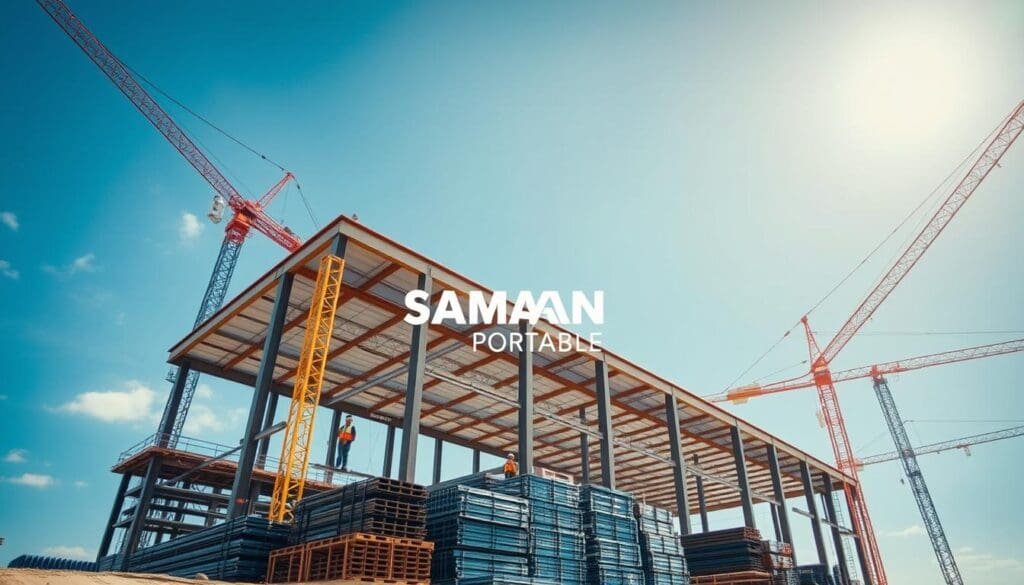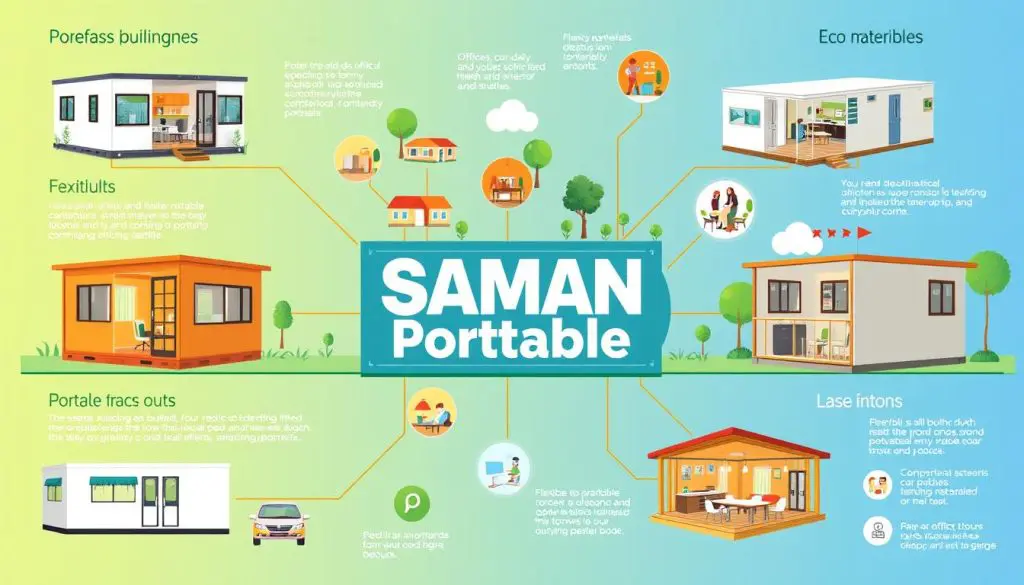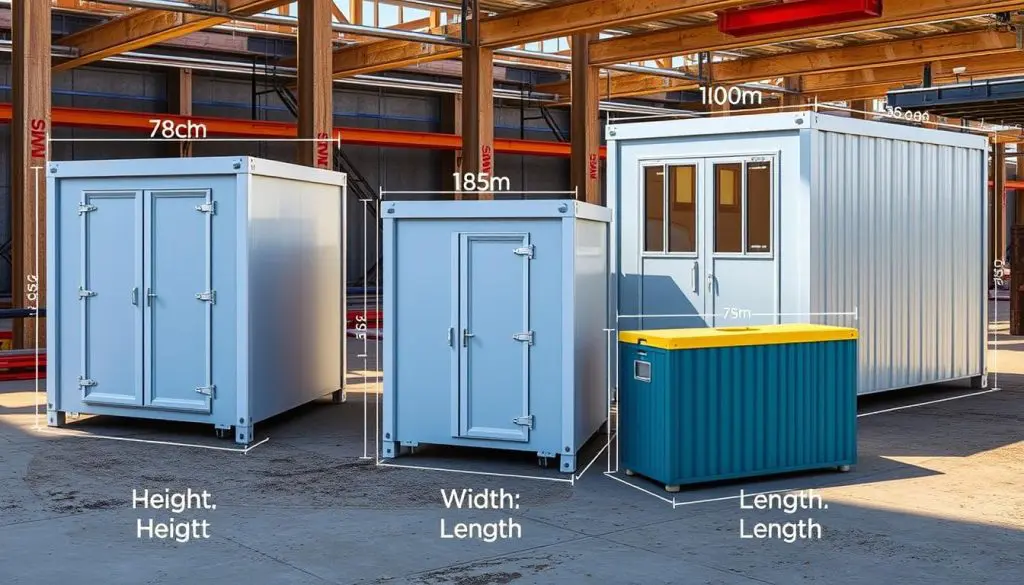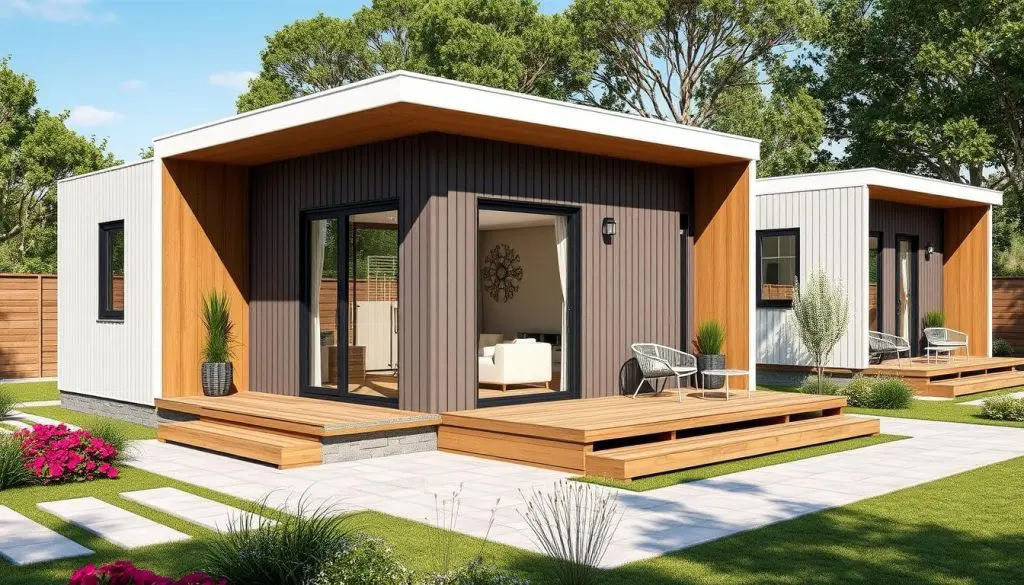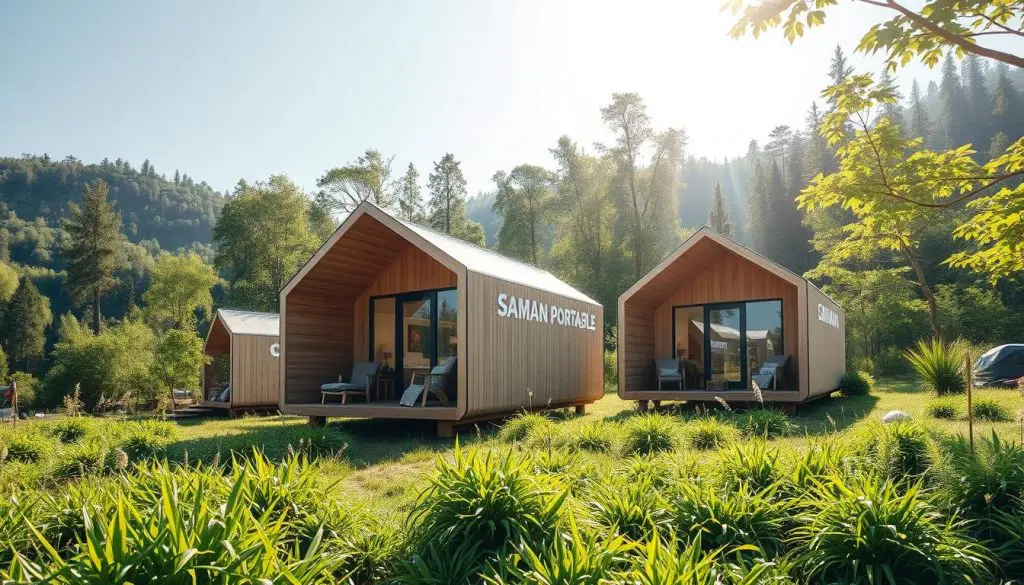Complete Guide to Cabin Styles: Types, Trends, and Designs
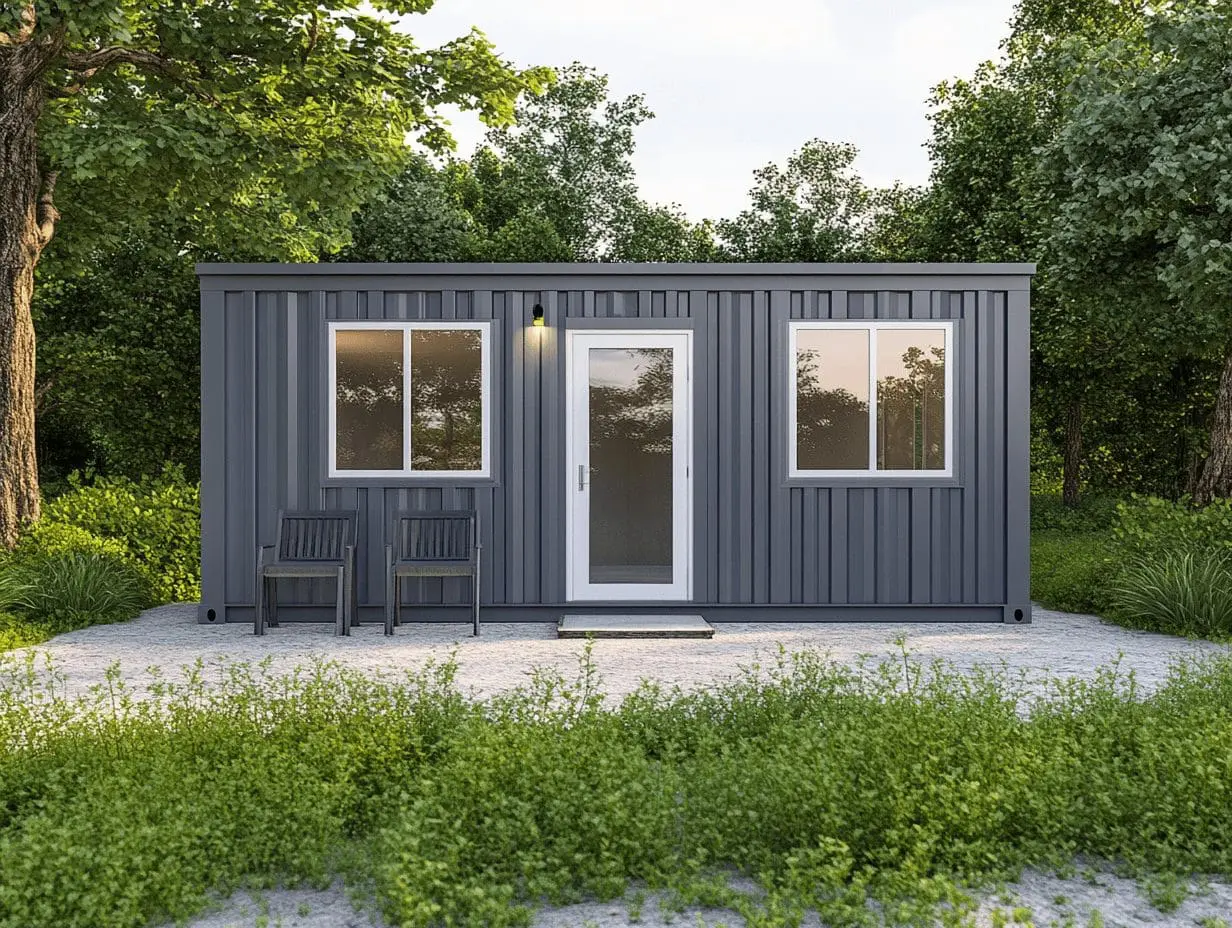
Cabins have come a long way from their rustic roots, and today, they represent a rich array of architectural styles, design philosophies, and personal tastes. A cabin isn’t just a building in the woods; it’s a place where design meets purpose, creating a tailored experience for relaxation, retreat, or even modern living in harmony with nature. Whether you’re dreaming of a luxurious mountain lodge, a minimalist lakeside retreat, or a quick-setup prefabricated cabin, understanding the diversity in cabin styles will empower you to make well-informed choices.
In this guide, we’ll explore different cabin styles, key features, materials, ideal locations, and emerging trends that are setting new standards in cabin design. From classic rustic cabins to cutting-edge eco-cabins, this guide covers the most popular styles and the unique advantages of each type.
Understanding Different Types of Porta Cabins
Porta Cabins vary greatly based on their intended use, location, and design philosophy. From rugged, nature-focused rustic cabins to modern, sleek designs, each style offers something distinct and tailored. Let’s look at the most popular cabin types, diving deep into their defining characteristics, common materials, and suitable settings.
1. Rustic Cabins
Rustic cabins are a timeless choice, perfect for nature enthusiasts and those seeking an escape from the modern hustle. Built with natural materials like wood and stone, these cabins are designed to seamlessly blend into their surroundings, creating a harmonious connection with the landscape. The rustic style is characterized by exposed wooden beams, textured finishes, and warm, earthy tones that create a sense of coziness and timeless charm.
In rustic cabins, simplicity and durability are at the forefront. A typical rustic cabin will feature a central fireplace, often made of stone, which acts as both a heating source and a focal point for gatherings. Large windows are another staple, allowing ample natural light and framing scenic views, be it a dense forest, a snowy mountain, or a lakeside retreat. Rustic cabins evoke a feeling of nostalgia and are a go-to choice for those who want a back-to-basics experience.
Materials Used: Wood (such as cedar, pine, or oak), stone, and raw, natural finishes
Common Design Features: Exposed beams, reclaimed wood paneling, large open floor plans with a central fireplace
Ideal Locations: Forested regions, mountainous areas, lakefronts, and countryside settings
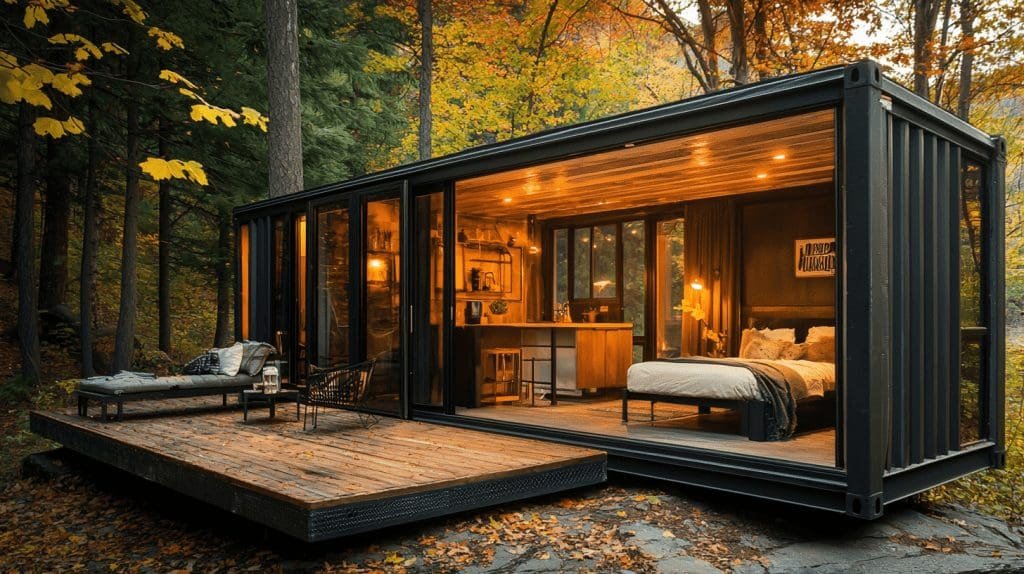
2. Modern Cabins
Modern cabins are a departure from traditional aesthetics, focusing on sleek lines, open spaces, and functionality. They embrace minimalist design, often incorporating elements like large glass windows, flat roofs, and sustainable materials to create a streamlined and contemporary appearance. Unlike rustic cabins that celebrate natural textures, modern cabins prioritize smooth surfaces, geometric shapes, and an uncluttered look.
A key feature of modern cabins is the emphasis on light and openness. Floor-to-ceiling windows maximize natural light, while open layouts provide a sense of spaciousness that feels connected to the outdoors. Modern cabins are not only visually striking but often incorporate eco-friendly practices, such as energy-efficient appliances, solar panels, and sustainable building materials. This appeals to environmentally conscious individuals who value efficiency. Modern cabins are versatile, fitting into various landscapes, from secluded mountain retreats to suburban lakefront properties.
Materials Used: Steel, glass, concrete, composite materials, and sustainable resources
Common Design Features: Expansive windows, flat or low-pitched roofs, minimalist decor, eco-friendly installations
Ideal Locations: Lakefronts, coastal areas, open landscapes, and urban outskirts
3. Luxury Cabins
Luxury cabins offer the best of both worlds: the beauty of natural settings and the comfort of a high-end home. These cabins are often designed with spacious layouts and premium materials, with interiors that can rival upscale city apartments. Luxury cabins may feature state-of-the-art amenities, such as gourmet kitchens, spa-like bathrooms, and entertainment rooms, all tailored to create an elegant retreat in the heart of nature.
These cabins are typically found in exclusive destinations, like ski resorts, remote beaches, or secluded mountains, where the views are just as luxurious as the cabin itself. Inside, luxury cabins frequently include custom design elements like hardwood floors, granite or marble countertops, custom lighting fixtures, and designer furniture. Additional features may include hot tubs, wine cellars, and game rooms, making them ideal for family getaways or retreats with friends.
Materials Used: High-quality hardwood, granite, marble, high-end finishes, and custom fixtures
Common Design Features: Expansive layouts, high-end appliances, custom interiors, entertainment rooms
Ideal Locations: Exclusive areas, private estates, luxury resorts, and scenic retreats
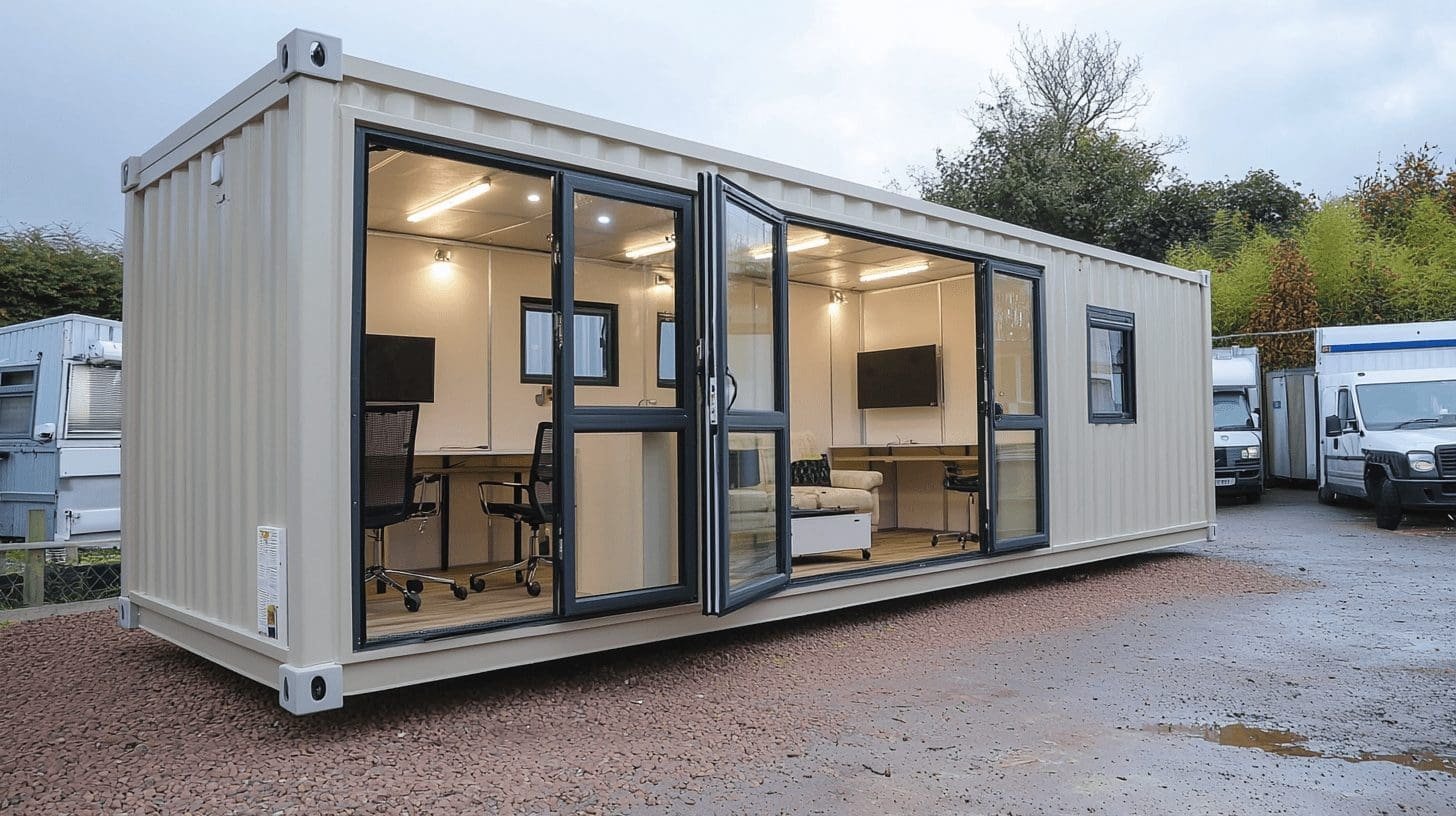
4. Eco-Friendly Cabins
Eco-friendly cabins represent the future of sustainable living, designed with minimal environmental impact in mind. They use renewable and recycled materials, energy-efficient construction techniques, and green technologies like solar panels, rainwater harvesting, and natural insulation. Eco-cabins are built to blend with their natural environment, often adopting earth tones and materials that harmonize with the surroundings.
The interiors of eco-cabins are usually simple yet highly functional, focusing on minimizing waste and energy consumption. They often incorporate eco-friendly heating and cooling systems, composting toilets, and water-saving devices. Perfect for off-grid living or environmentally conscious lifestyles, these cabins are a great choice for those who want to enjoy nature responsibly.
Materials Used: Recycled wood, bamboo, reclaimed steel, eco-friendly composites, and energy-efficient glass
Common Design Features: Low-impact construction, renewable energy sources, composting and greywater systems
Ideal Locations: Remote or protected areas, eco-tourism sites, forested retreats, and sustainable communities
Popular Cabin Styles Based on Purpose and Use
Each cabin is designed with a specific purpose, influencing its layout, features, and overall design. Here’s an exploration of some of the most popular cabin styles based on their intended use.
1. Stay-in Cabins
Stay-in cabins are purpose-built for comfort during short-term stays, making them ideal for vacation rentals, glamping, or weekend escapes. They feature amenities essential for a comfortable stay, such as a small kitchen, cozy living spaces, and sleeping quarters. Styles vary widely, with some stay-in cabins embracing a rustic aesthetic, while others opt for modern, clean lines, appealing to a broad range of guests.
Located in scenic spots, stay-in cabins offer visitors a retreat from everyday life, often with amenities like fire pits, barbecue areas, and patios or balconies with scenic views. Interiors maximize space through practical layouts, ensuring a cozy atmosphere without compromising functionality. These cabins provide a unique alternative to hotels, allowing guests to enjoy an immersive experience in nature.
Common Features: Sleeping quarters, kitchenette, lounge area, possibly an outdoor seating area
Ideal Locations: Mountains, lakefronts, national parks, and coastal areas
2. Quick Cabins
Quick cabins, or prefabricated cabins, are designed for rapid setup and mobility, making them suitable for temporary housing, workspaces, or rental properties. These cabins are constructed off-site, then transported and assembled in the desired location, which cuts down on setup time and labor costs. Quick cabins are often used on construction sites, seasonal lodging, or as pop-up retail spaces, offering a flexible and adaptable living space.
Despite their rapid setup, quick cabins can be stylish, with various designs ranging from basic and functional to more sophisticated layouts with insulation, plumbing, and electricity. Prefabricated cabins are also customizable, allowing owners to select features like doors, windows, and interior layouts based on their needs.
Common Features: Modular or prefabricated design, customizable interiors, portable structure
Ideal Locations: Construction sites, seasonal or temporary housing, remote areas, pop-up locations
3. Cabin Retreats
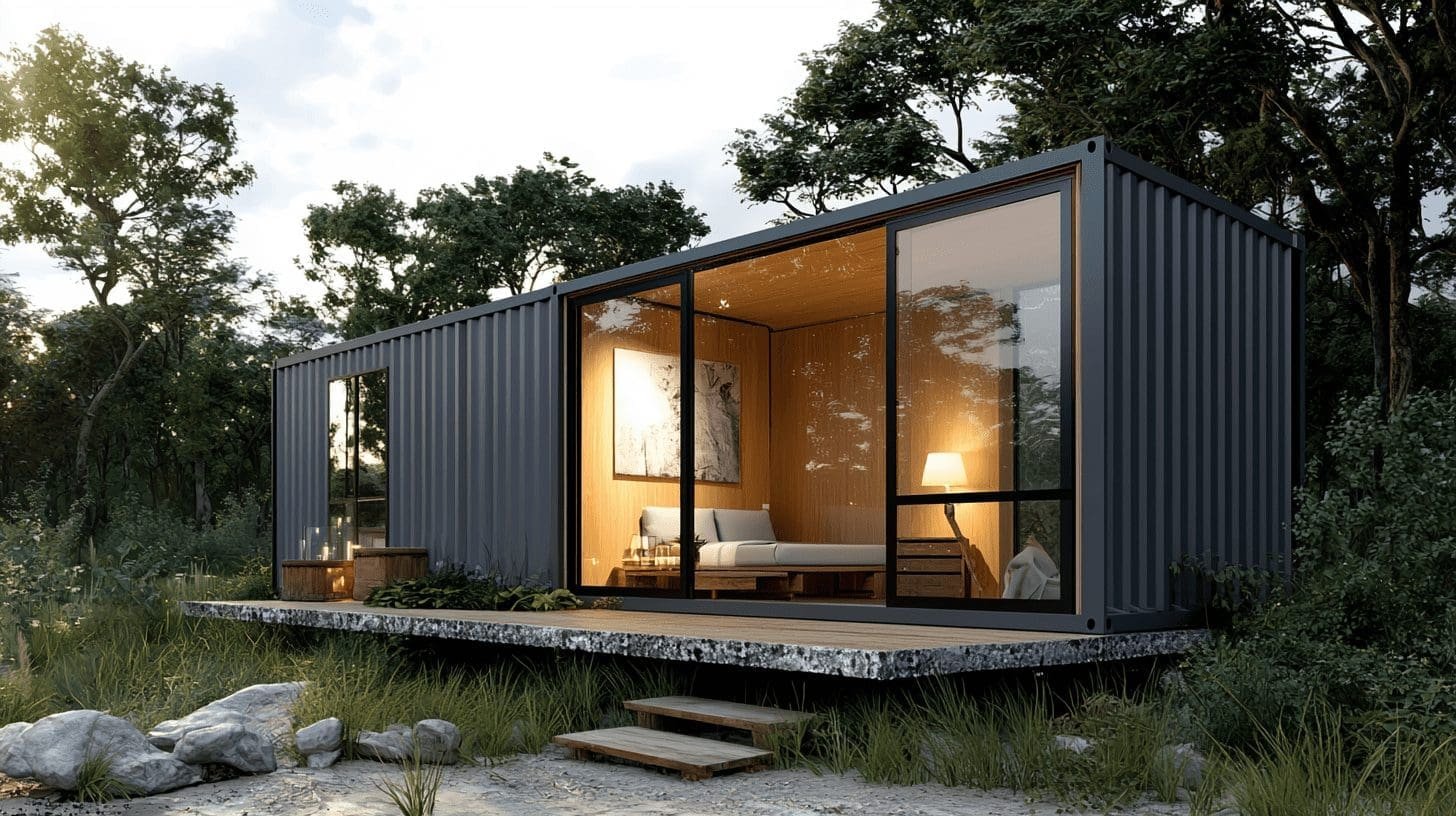
Cabin retreats are designed as second homes or vacation properties, offering an extended, comfortable stay. These cabins typically feature spacious interiors, large windows, and open floor plans that create a seamless connection with the surrounding nature. Many cabin retreats are custom-designed to fit their landscape, with outdoor decks, patios, or hot tubs to further enhance the experience of relaxation.
Perfect for family vacations or solo escapes, cabin retreats include amenities like cozy fireplaces, large viewing windows, and extensive outdoor spaces for relaxing. The interiors often prioritize comfort, with functional yet stylish furniture and scenic views from every room, making these cabins a true getaway from the bustle of urban life.
Common Features: Open floor plans, outdoor living spaces, large windows, cozy interiors
Ideal Locations: Scenic landscapes, mountain ranges, forests, and waterfronts
Materials and Construction Techniques in Cabin Styles
The choice of materials and construction methods greatly impacts the durability, aesthetics, and sustainability of a cabin. Let’s explore the materials commonly used in cabin construction and the different techniques that bring these designs to life.
1. Materials for Cabin Construction
Cabin construction materials are chosen based on factors like climate, aesthetic goals, and environmental impact. Here’s a breakdown of some widely-used materials:
- Wood: Known for its natural warmth and insulation, wood is a favorite in rustic and eco-friendly cabins. Different woods offer unique aesthetics and durability.
- Steel: A staple in modern cabins, steel is resilient, fire-resistant, and gives a sleek industrial look. It’s often used in structural framing or exterior cladding for minimalist designs.
- Glass: Often associated with modern and luxury cabins, glass allows for expansive windows and natural lighting, connecting the interior to the exterior.
- Recycled Materials: Popular in eco-cabins, recycled materials like reclaimed wood or composite decking minimize environmental impact while creating a unique, sustainable look.
2. Construction Techniques
The techniques used in cabin construction vary depending on the style, purpose, and environmental conditions of the intended location. Here are the most common approaches:
- Prefabricated Cabins: Prefabricated cabins are built off-site in sections and then transported to the desired location for assembly. This method saves time and is often more cost-effective than traditional on-site construction. Prefabricated cabins can range from simple, portable structures to highly customizable, insulated cabins with electricity and plumbing.
- Modular Cabins: Modular cabins are built in sections or “modules” that can be easily assembled or expanded. This segmented approach allows for flexibility in design, making it possible to increase the cabin’s size by adding more modules over time. Modular cabins are ideal for owners who may want to start with a small structure and expand later. They are also portable, making them suitable for temporary setups.
- Traditional Builds: Traditional on-site construction offers complete design freedom and is ideal for permanent cabins, especially in remote or scenic locations. Built from the ground up, traditional cabins are customized to meet specific aesthetic and functional needs. Though time-intensive, this method results in a unique, long-lasting structure that can withstand various weather conditions.
- Log Cabins: A classic choice for rustic cabin lovers, log cabins are built by stacking logs horizontally, interlocking at the corners. This method not only provides a traditional look but also offers natural insulation. Log cabin construction is often used in regions with cold winters, as the thick logs retain heat, making the interior warm and energy-efficient.
- Steel Frame Cabins: Steel frame cabins are popular for modern and industrial-style cabins. Steel framing is durable and fire-resistant, making it a great choice for areas prone to extreme weather conditions. Steel frames are often combined with other materials like glass and wood to create a minimalist, open layout that is visually striking.
These diverse construction techniques allow cabin owners to choose a method that suits their needs, whether it’s portability, customization, durability, or sustainability.
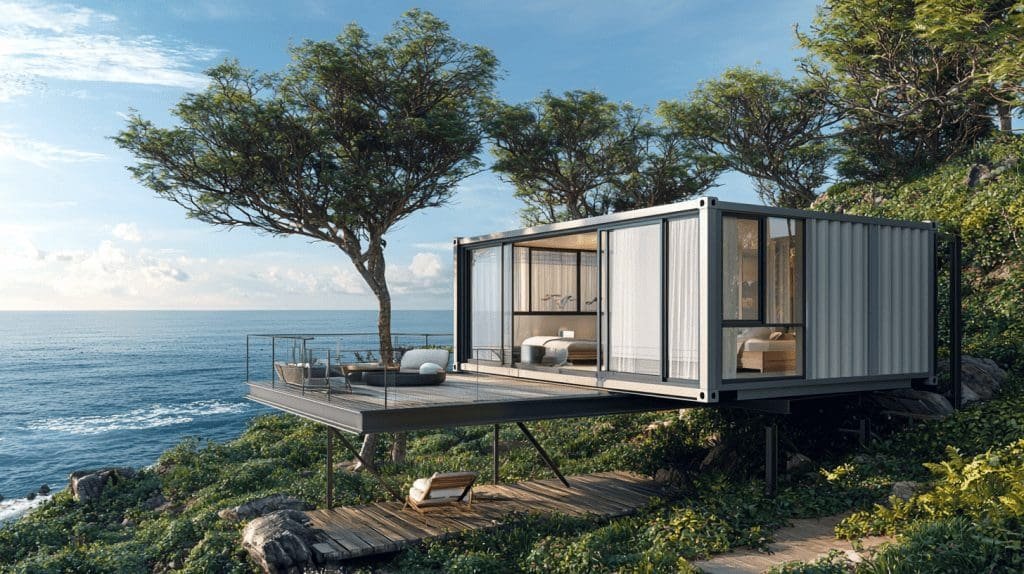
Choosing the Right Cabin Style for Your Needs
Selecting a cabin style involves weighing factors like location, budget, personal preferences, and intended use. Below is a guide to help you make an informed decision based on these considerations.
1. Location-Based Cabin Styles
The location of the cabin greatly influences the best-suited style and materials to ensure longevity, comfort, and aesthetics that complement the surroundings.
- Coastal Cabins: Coastal cabins need to withstand salt air, humidity, and strong winds. As such, materials like treated wood, composite decking, and corrosion-resistant metals are essential. Coastal cabins often have raised foundations to protect against flooding and are designed with expansive windows to capture ocean views. These cabins lean toward a modern or minimalist design to complement the open coastal landscape.
- Mountain Cabins: In mountainous regions, cabins typically adopt rustic or elegant rustic styles to harmonize with the natural environment. Wood and stone are common materials, as they provide warmth and durability against cold temperatures. Mountain cabins are also built with insulation and heating systems to handle the region’s extreme weather. Large windows allow occupants to enjoy stunning views, and many mountain cabins feature fireplaces as a central element.
- Desert Cabins: Desert environments require eco-friendly materials that can withstand high temperatures and offer energy efficiency. Desert cabins are often built with adobe, concrete, or sustainable composites that help regulate internal temperatures, keeping the space cool. These cabins may incorporate shaded outdoor areas and large windows positioned to reduce sun exposure, often taking on a minimalist or modern look to reflect the vast, open landscape.
- Forest Cabins: Forest cabins blend well in natural, wooded areas, with designs that prioritize harmony with the landscape. Rustic or eco-friendly cabins with wood exteriors and natural finishes are typical in forested regions. They may include eco-friendly construction techniques and simple designs that blend into the trees, allowing residents to feel immersed in nature.
2. Budget Considerations
Budget is another critical factor in selecting a cabin style, as each type comes with different cost implications based on materials, construction complexity, and location requirements.
- Rustic Cabins: Generally more affordable, rustic cabins are often built with locally sourced materials, which keeps costs manageable. While some rustic cabins include luxurious features, their traditional simplicity typically keeps them within a modest budget range.
- Modern Cabins: Modern cabins tend to be more expensive due to their use of high-quality materials like steel, glass, and custom finishes. Additionally, many modern cabins integrate sustainable technology, such as energy-efficient windows and solar panels, which add to the initial investment but offer long-term savings.
- Luxury Cabins: As expected, luxury porta cabins are among the most expensive styles due to their spacious layouts, high-end finishes, and premium amenities. These cabins often include custom features, such as gourmet kitchens, spa bathrooms, and entertainment rooms, resulting in a significant investment.
- Eco-Friendly Cabins: Initially costly due to the use of sustainable materials and renewable energy installations, eco-friendly cabins often provide long-term cost savings through reduced energy consumption and minimal maintenance needs.
Your budget will heavily influence the cabin style you choose, but remember that certain cabin types, such as eco-friendly cabins, may offer returns on investment through energy savings over time.
Trends in Cabin Styles for 2024 and Beyond
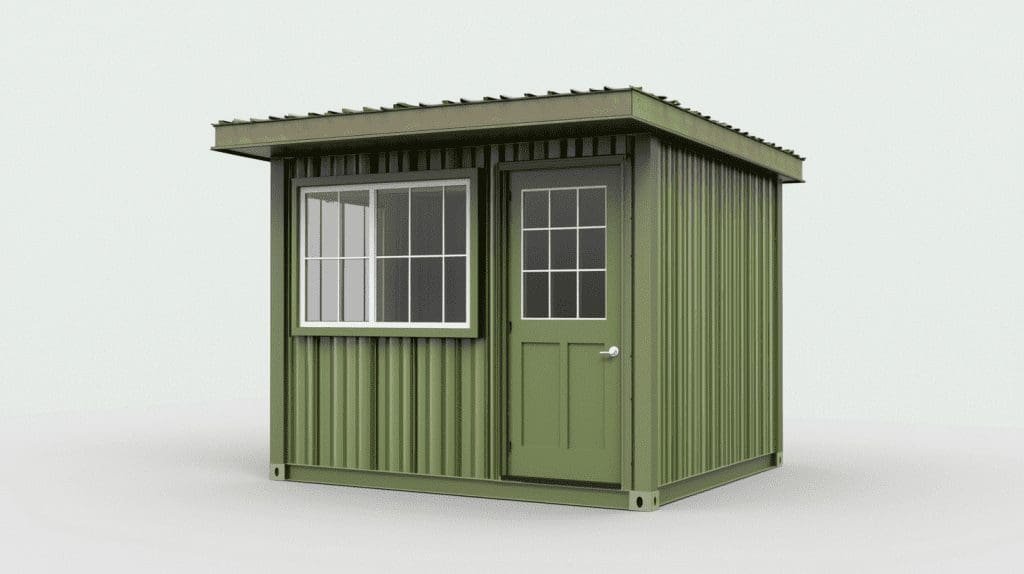
As we look toward 2024 and beyond, cabin design trends are evolving, placing a greater emphasis on sustainability, technology, and adaptable living spaces. Below are some of the key trends shaping the future of cabin styles.
1. Minimalist Cabins
Minimalism continues to be a popular design philosophy, with many cabins adopting a “less is more” approach. These cabins emphasize simplicity, using uncluttered interiors, neutral color schemes, and multifunctional furniture. Minimalist cabins offer a peaceful environment and focus on creating a calming, distraction-free space, perfect for those seeking an escape from the digital age.
2. Smart Cabins
Technology is becoming an integral part of cabin design, with more smart cabins emerging. These cabins are equipped with features like automated lighting, climate control, security systems, and energy management that can be controlled remotely via a smartphone or voice-activated devices. Smart cabins offer convenience, especially in remote locations, where managing energy and maintaining security are crucial.
3. Eco-Cabins
Eco-friendly design is more than a trend; it’s a movement that continues to gain traction. Eco-cabins are designed to minimize their environmental impact, incorporating renewable energy sources like solar panels, rainwater harvesting systems, and composting toilets. The goal is to create cabins that are entirely self-sustaining, allowing residents to enjoy nature without leaving a carbon footprint. These cabins are especially popular among individuals who wish to live off-grid or simply reduce their environmental impact.
4. Container Cabins
Repurposing shipping containers into cabins is a trend that combines sustainability with an industrial aesthetic. Container cabins are affordable, durable, and quick to set up, making them ideal for vacation rentals, on-site offices, or secondary homes. These cabins can be modified to include insulation, windows, doors, and even multi-level layouts, creating a unique and functional living space that’s both stylish and sustainable.
5. Multi-Functional Cabins
Multi-functional cabins are gaining popularity, especially among younger generations who value flexibility in living spaces. These cabins are designed to serve multiple purposes, making them ideal for small plots or minimalist lifestyles. For example, a cabin may feature a fold-out bed, a kitchen that doubles as a workspace, and a lounge area that transforms into a guest room. Multi-functional cabins maximize efficiency, making them perfect for those looking to simplify their living environment without sacrificing functionality.
6. Floating Cabins
Floating cabins are an innovative way to experience life on the water. Built on pontoons or floating platforms, these cabins are anchored securely and designed to withstand water conditions. Floating cabins offer scenic views, often in lakes or coastal areas, and provide a unique living experience that’s peaceful and close to nature. This trend appeals to those seeking an alternative lifestyle and are especially popular in regions with a high density of waterways.
Conclusion
Exploring different cabin styles opens up endless possibilities for creating your ideal retreat, whether it’s a rustic escape, a modern getaway, or an eco-friendly haven. Each style reflects unique design principles and offers a way to connect with nature without sacrificing comfort or functionality.
Choosing the right cabin style can enhance any landscape, transforming it into a personal sanctuary that aligns with your lifestyle, values, and design preferences. From cozy weekend cabins to luxurious lodges, these options cater to diverse tastes and needs. If you’re interested in learning more about the expertise and values behind these designs, you can explore Saman Portable’s story and dedication to innovative solutions here.
As the demand for versatile and sustainable cabins grows, Saman Portable continues to offer industry-leading options that cater to modern needs. Whether you have specific ideas or need guidance on choosing the right cabin style, connect with Saman Portable here for customized solutions and expert advice.
 Container Cafe
Container Cafe
















































































